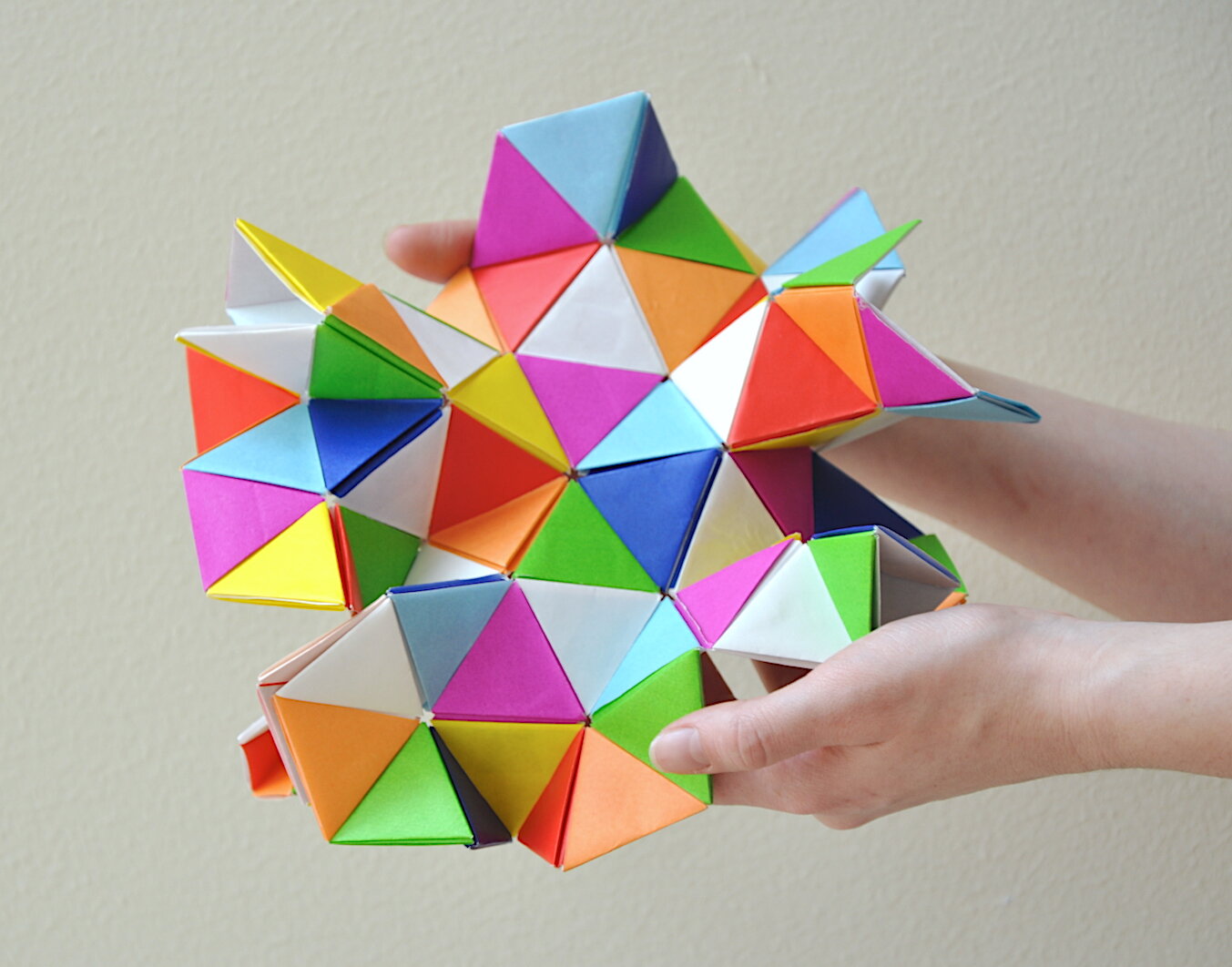Hyperbolic surfaces
my undergrad thesis and introduction to the worldwide origami community
One of my college majors (...there were three) was a small liberal arts honors program that counted as its own major. For our senior thesis we could do whatever we wanted so long as we had departmental approval and a professor willing to advise us. Naturally I wanted to do something with origami so they sent me to a math professor named Dr. Michael Starbird.
Dr. Starbird suggested I attempt folding a hyperbolic surface and I replied with something like, "Sure, what's that?" and had to go off and teach myself a sufficient amount of hyperbolic geometry. I then had to figure how to make a representation of a hyperbolic surface out of origami. This was the result. The whole thing is floppy and you can see that it can take any number of orientations.
About ten months after I graduated I realized that all along I could have used origami math professor Dr. Tom Hull's PHiZZ unit to model negative curvature, which is central to hyperbolic surfaces. The result was far more elegant than what I did for my thesis. There's a lesson here but I haven't figured out what it is. I also discuss Tom’s influence in my section on smocking.
A different orientation.
A close-up.
Various people were excited about my project which led to a couple math conferences and my first gallery exhibit... which led to my very first origami convention in Vancouver in 2007. I was awestruck to meet so many origami heroes whose work I'd followed since I was a child and I’m proud to now call many of them my friends. I was also interviewed for a European magazine called GEO.
In 2008 I got an email from a Swiss publisher asking if I'd like to be included in a book. I sent some high res photos and largely forgot about it until 2009. My work was included in a fold out poster of the cover and featured on two pages of Unfolded. Other artists included Frank Gehry(!) and Issey Miyake(!!), whose famous BAOBAO bag inspired my SACKSACK (on my Accessories page) years later. The book is now on its third printing.
More info and instructions for folding Dr Tom Hulls PHiZZ unit can be found at http://origametry.net/phzig/phzig.html and Matthew Deutsch's page linked in the image.







